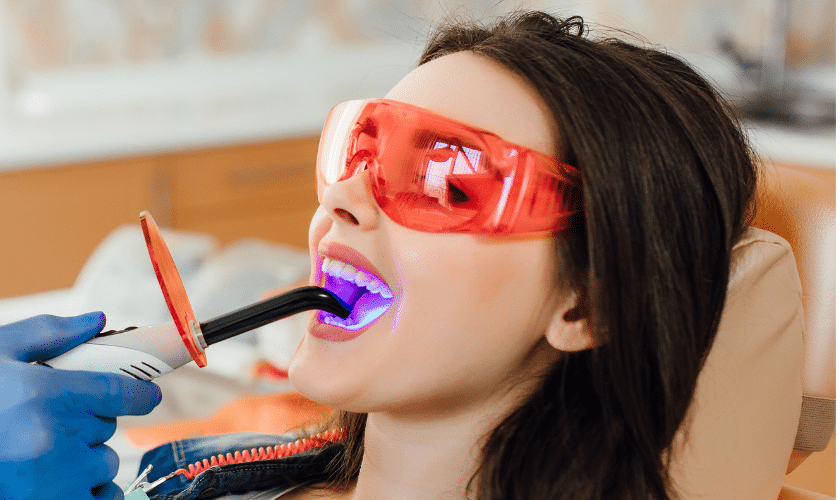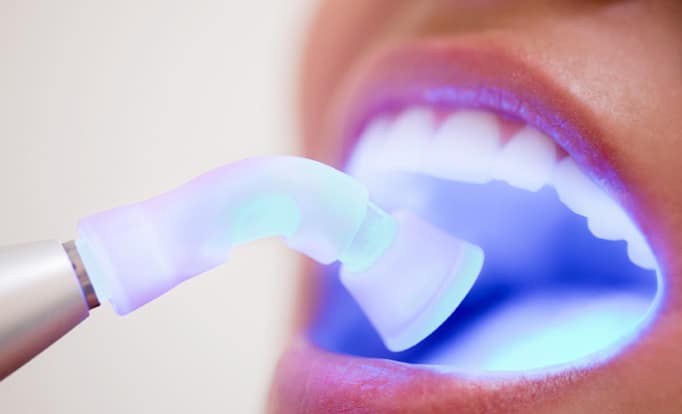
What Is The Purpose Of Oral Cancer Screening
Healthcare professionals use oral cancer screenings to identify the signs of cancer in your oral cavity. They examine the inner linings of lips, gums, cheeks, tongue, roof, and floor of the mouth for abnormalities and lesions. If the healthcare professionals find anything suspicious, they will refer you to an oncologist for further evaluation.
What Is An Oral Cancer Screening?
An oral cancer screening can be defined as the examination of the mouth for signs of cancer. Oral cancers include jaw, mouth, and tongue cancer.
The areas examined during an oral cancer examination have been mentioned in the pointers below:
- Roof and floor of your mouth
- Check the inner lining of the mouth
- Tonsils
- Lips
- Gums
- Tongue
Why Is Oral Cancer Screening Important?
Oral cancer is a common cancer of the neck and head that affects people all across the globe. Reports say that almost 54,000 Americans suffer from oropharyngeal or oral cancer diagnosis every year.
You need to know that oral cancer has a five-year survival rate of 57%. This implies that more than half of the individuals diagnosed with oral cancer are alive five years after their diagnosis. Oral cancer is not very difficult to diagnose. But, the fatality rate is high as oral cancer is often detected in later stages of development. Going for oral cancer screening sessions is the best tool available for early diagnosis and treatment.
When Are You Recommended To Go For Oral Cancer Screenings?
Oral cancer screenings are specifically used to identify the signs of cancer before it is too late. The earlier you can diagnose the problem, the more the chances of the treatment being successful.
Can A Dentist Notice If You Have Oral Cancer?
While a variety of healthcare professionals can perform oral cancer screenings, dentists usually offer them as a part of routine checkups. Healthcare providers use this kind of screening to look for the signs of cancer. If they find anything abnormal, you will be recommended to undergo further testing, diagnosis, and treatment. It is imperative to note that oral cancer screenings are not explicitly used to diagnose cancer.
How Is Oral Cancer Detected At An Early Stage?
Oral cancer screenings can help detect the early signs of oral cancer. But, the only surefire approach to figuring out if you are suffering from oral cancer is to collect suspicious cells and test them in a laboratory.
How To Prepare For The Screening?
You need to do nothing specific to prepare for oral screening. The examination usually takes place while undergoing a routine physical or dental checkup.
What Should You Expect During An Oral Cancer Screening?
Your healthcare professional might use a combination of oral cancer screening methods, which includes palpation, visual exam, oral screening dyes, and lights. They can also capture photographs of areas with abnormalities with the aim of monitoring. In general, the oral screening procedure does not take more than five minutes.
Visual examination
Your healthcare professional will look for lesions in your throat and mouth during this examination stage. The abnormalities can include erythroplakia and leukoplakia.
Palpation
Your healthcare provider will use his/her fingers to look for bumps or lumps around your neck, face, and jaw. You should be careful to inform him/her if there are any other sore or tender areas.
Oral cancer screening dye
Many healthcare professionals use oral cancer screening tools like toluidine blue dye to look for signs of oral cancer. They coat the lesions with dye which can help identify areas more likely to become cancerous.
Oral cancer screening light
There are also special lights available that can help identify tissue abnormalities in your mouth. To use this tool, your healthcare professional will ask you to rinse your mouth with a fluorescent mouthwash. Next, he/she will use the special light in your mouth, where the healthy tissue looks dark, and the abnormal tissue seems white.
Final Thoughts
The head and neck are frequently affected by oral cancer. Due to the alarmingly high fatality rates, accurate and early detection is essential for correct treatment and diagnosis. Find out how often you should go for screenings to ensure your health. Undergoing routine screenings will give you the best scope for finding oral cancer in its early stages.



